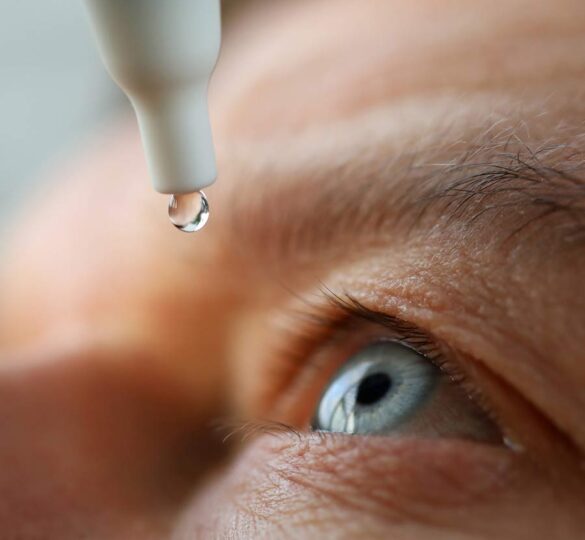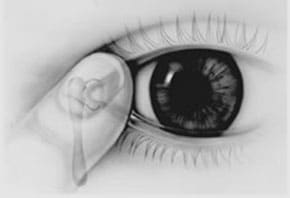Is There a Best Technique for Putting in Eye Drops?
Is there a “best technique” for getting my glaucoma medication eyedrops in my eyes?

There are two issues with getting the eye drop where you want it: inside the eyeball. The first is getting the drop from the container onto the surface of the eye. The second issue is getting the drop from the surface of the eye to the inside of the eye where it will work to lower the eye pressure.
First, you will increase the chances that a single drop hits the eye if you lie down flat with your face up. Only one drop is needed, not two, even if the bottle says, “one drop or two.” Gently pull your lower lid down to increase the amount of eyeball showing, bring the bottle about an inch above the eye surface (hold the bottle as vertical as possible), then gently squeeze the bottle until you see or feel the drop hit. Be careful not to touch the bottle to your eye as this can transfer bacteria to the bottle tip.
Next, to maximize effectiveness and minimize systemic side effects, use the 2-minute eyelid closure technique combined with closure of the tear drainage system:

Once the drop is on the eye, do not blink your eye or move it around to spread the drop. Instead, gently close your eyes just once, place the pad of your most sensitive finger at the inside corner of the eyelid by the nose and press gently.
Leave the eyelids closed and the finger pressing gently for 2 full minutes. Studies have shown that it takes 2 full minutes for the drop to completely penetrate the surface of the eye to get inside. Put the cap back on the bottle, with eyes still closed. The closed eyelids and pressure on the tear drainage duct avoids unwanted systemic side effects from the potent eyedrop drugs by preventing the drop from getting inside the nose where it could enter the bloodstream rapidly.
After two minutes, the drop is fully absorbed into the eye. You can now put a different drop in, if you use more than one drop.
—
References:
- White, William L. et al. Effect of Blinking on Tear Elimination as Evaluated by Dacryoscintigraphy. Ophthalmology 1991; 98: 367-369.
- Fraunfelder, FT. Extraocular fluid dynamics: how best to apply topical ocular medication. Trans Am Ophthalmol Soc 1976;74:457-87
- Zimmerman, Thom J, et al. Improving the therapeutic index of topically applied ocular drugs. Arch Ophthalmol 1984; 102:551-3
- Sharir, Mordichai et al. Nasolacrimal Occlusion Improves the Therapeutic Index of Antiglaucoma Medications. J Assoc for Academic Minority Physicians. 1994; 5:62-7.
Article by Bradley L. Schuster, MD. Last reviewed on March 23, 2022.
Bradley L. Schuster, MD, is a glaucoma specialist in Denver, Colorado, and Assistant Clinical Professor at the University of Colorado, Health Sciences Center.